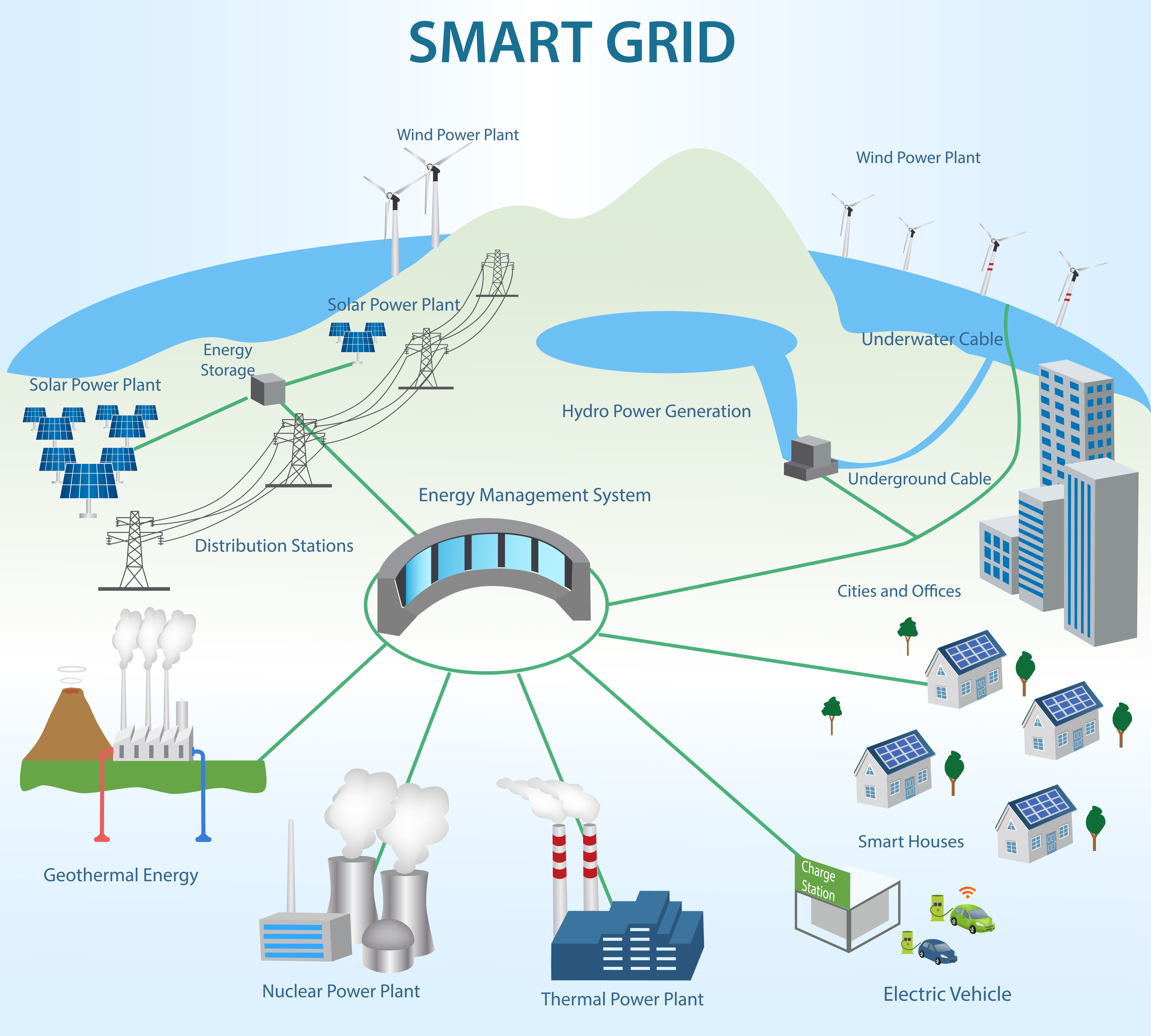Smart Grids
What is a Smart Grid?
Smart grids are energy networks that can automatically monitor energy flows and adjust to changes in energy supply and demand accordingly. When coupled with smart metering systems, smart grids reach consumers and suppliers by providing information on real-time consumption. With smart meters, consumers can adapt – in time and volume – their energy usage to different energy prices throughout the day, saving money on their energy bills by consuming more energy in lower price periods.
Smart grids can also help to better integrate renewable energy. While the sun does not shine all the time and the wind does not always blow, combining information on energy demand with weather forecasts can allow grid operators to better plan the integration of renewable energy into the grid and balance their networks. Smart grids also open up the possibility for consumers who produce their own energy to respond to prices and sell excess to the grid.
A Smart Grid is an electricity network which automatically monitors the flows of energy and is able to adjust to changes in both supply and demand accordingly. It integrates behaviour and actions cost efficiently of all users connected to it, ensuring an economically efficient, sustainable power system with minimal losses and high levels of quality and security of supply and safety.

Through a smart grid information on real-time consumption and production can be provided to consumers, producers and so called “prosumers”. The smart grid enables consumers to take advantage of differing energy prices so they can save money on their energy bill. The more users in a smart grid the better it will work in terms of efficiency and flexibility. In order to achieve such a situation consumers and prosumers need to be connected via smart meters.
Smart Grids also help to make the energy system more flexible when the penetration of renewable energy sources, like solar and wind, is increasing. Grid operators are better able to balance their electricity grid by using weather forecasts and energy demands. When electric vehicles are functionally added to the smart grid they can be both store exess energy or provide electricity when there is a shortage in supply.
The main smart grid applications are optimising grid monitoring and control; enabling consumers to contribute to grid management; and improving the physical capacity and flexibility of the network.
Smart Grids enable better integration of renewables in the system which subsequently leads to further mitigation of climate change.
This project has received funding from the European Union’s Horizon 2020 research and innovation programme under grant agreement No 731249.
This website reflects only the author's view. The European Commission and the Innovation and Networks Executive Agency (INEA) are not responsible for any use that may be made of the information it contains.

